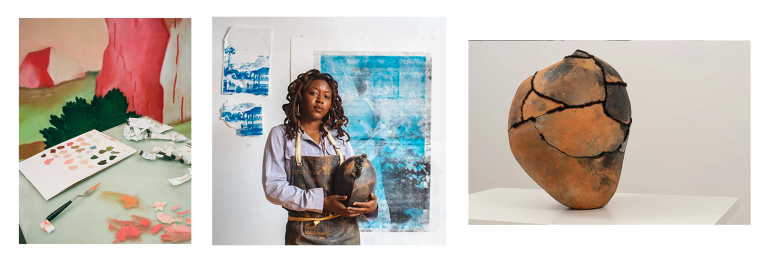LAGOS, Nigeria (VOICE OF NAIJA) — As art observers, we tend to focus on the subjects that artists depict in their works, but the artistic technique employed to create the works is frequently just as important—if not more so—than the subjects themselves.
Visual artists occasionally experiment with unusual and unique techniques and materials in their quest to create masterpieces.
Though we normally think of visual artists working with paints, clay, inks, or cameras, consider some of the more unusual materials artists have used throughout history.
Every visual artist on this list has a distinct selling point that sets them apart, whether it’s experimenting with weird art techniques like burnt plastic or chewing gum or using surprising tools like Microsoft Excel to make their artwork.
Adebunmi Gbadebo
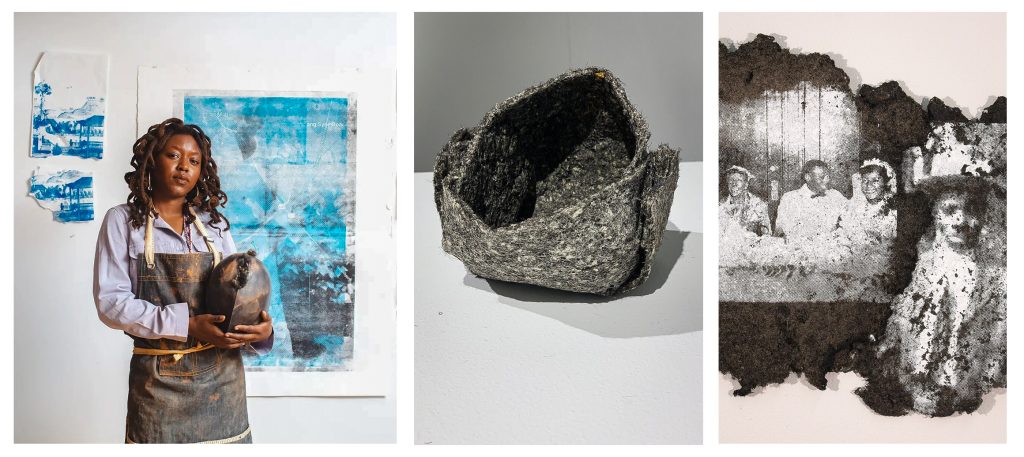
Adebunmi Gbadebo is a visual artist who works in sculpture, painting, and printmaking. Adebunmi presently resides in Philadelphia. She was born in New Jersey, USA, to a black American mother and a Nigerian father.
Adebunmi Gbadebo began her unusual artistic journey at the School of Visual Arts in New York City, where she decided to use her art as a form of identity for those who look like her to establish their place in art history as well. She combines black hair, cotton, rice paper, and various blue shades to elegantly weave the attention into her True-Blue portraits.
The Smithsonian National Museum of African Art, the Minneapolis Institute of Art, and the Minnesota Museum of American Art all have permanent collections of Gbadebo’s work.
Gregor Hildebrandt
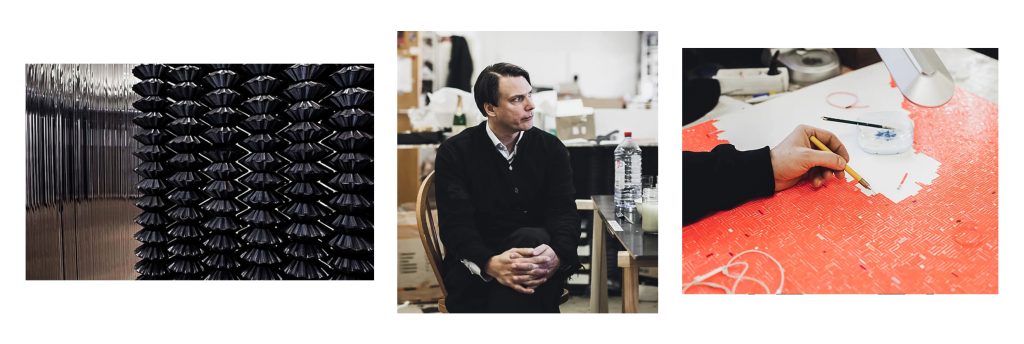
Gregor Hildebrandt is a German contemporary artist who lives and works in Berlin. He was born in 1974 in Bad Homburg, West Germany. Cassette tape and vinyl are Gregor’s characteristic art materials, which he combines and assembles into seemingly simple yet latently romantic paintings, sculptures, and installations.
These pop-cultural sources, which include songs, are intended to elicit both collective and personal memories. His unusual rip-off technique, like analog storage media, is a metaphor for the mnestic process itself: it consists of rubbing magnetic coating against double-sided adhesive tape affixed to canvas to trace elaborate and elusive powdery patterns.
Gregor buys his art media in bulk from eBay, repurposing items often available at garage sales and junkyards and portraying visually what is recorded in audio—just like the grooves of a vinyl record.
Francis Picabia (1879-1954)
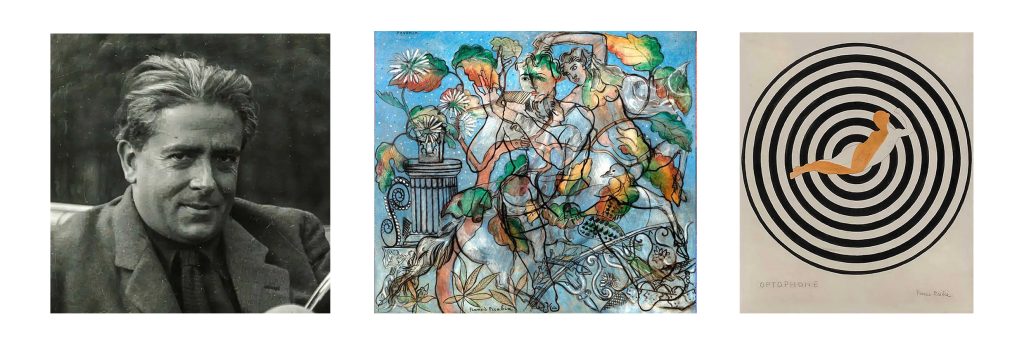
Picabia was an artist who experimented with a variety of styles throughout his life and career. Though he began as an Impressionist painter, he later experimented with Fauvism, Cubism, Dadaism, and Surrealism.
Because there were so many artistic groups operating in France in the early twentieth century, Picabia was able to be engaged in and influence a wide range of artistic circles. Picabia’s personal circumstances, as well as his family’s finances, allowed him to be more free than other artists of his day.
Francis Picabia’s legacy is that he was a crucial player in the invention of many distinct art styles, including Dadaism and Surrealism. Despite his refusal to commit to one artistic style, the Transparencies remain some of his most recognized and valuable works, with his 1929 painting Pavonia recently auctioning for nearly 10 million euros.
Francis Picabia was a true trailblazer, producing one of the first examples of true abstraction in modern art with his piece Caoutchouc and adopting a sampling technique in painting years before it became popular.
Francis Picabia was a French artist who was prominent in numerous movements in the early twentieth century.
Alberto Burri (1915 – 1995)

Alberto was an Italian visual artist, painter, sculptor, and physician who was born on March 12, 1915, in Città di Castello, a tiny town in the Umbria region. He is associated with the matterism of the European informal art movement and describes his approach as polymaterialist. He graduated from the Università degli Studi di Perugia with a degree in medicine in 1940.
Alberto Burri began experimenting with art while in a World War II prisoner-of-war camp in Texas, inspired by Jean Dubuffet’s use of dirt, sand, and organic materials. To perfect his artistic technique, he experimented with found materials such as burlap, coal tar, and oil.
Though begun out of necessity, this practice evolved into a distinctive style, culminating in his popular series, Combustioni Plastica, of meticulously burned sheets of plastic. Alberto makes postmodern pieces that hang from the ceiling and inexorably merge light and transparency into his artwork, using a flaming torch as his paintbrush and a sheet of plastic as his canvas.
Alberto Burri pioneered a new material realism distinct from postwar gestural abstraction’s emotive and existentialist content. He blurred the lines between painting and relief sculpture, and he reinvented the concept and execution of the monochromatic.
Alberto’s artistry is humble, scientific, and violent. From sewing to burning, his techniques speak to his eagerness to experiment with practices that were unusual for art making at the time. Some of these activities appear to be connected to his biography and historical background.
Dan Colen
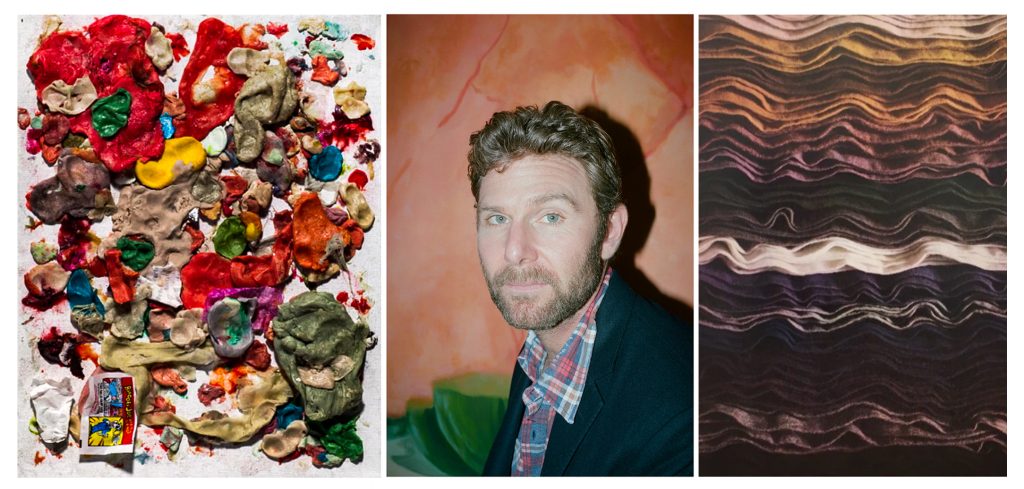
Dan Colen is an American multimedia neo-pop artist born in 1979 who has made a name for himself with his unique painted sculptures, gum paintings, and installations. He was born and raised in Leonia, New Jersey.
His father, sculptor Sy Colen, began teaching him art at an early age. Dan wanted to be a skateboarder or a professional basketball player in the NBA before deciding to become an artist. Colen’s dreams did not pan out, so he opted to attend art school.
In 2001, he received a BFA in painting at the Rhode Island School of Art and Design and moved to New York City.
Dan Colen began to make ‘paintings’ out of chewing gum in 2006, ushering in an era of material and medium exploration as opposed to his earlier preference for representational subject matter.
Primarily concerned with being guided by his art medium instead of manipulating it himself, Dan has mused on this technique as a loss of control and an excitement with letting go, commenting that his paintings have taken on “inevitable forms—almost like destined forms,” as if they have a life of their own.
Dan’s works combine abstract and conventional imagery with rebellious, religious, mythical, and, in certain cases, offensive connotations.




